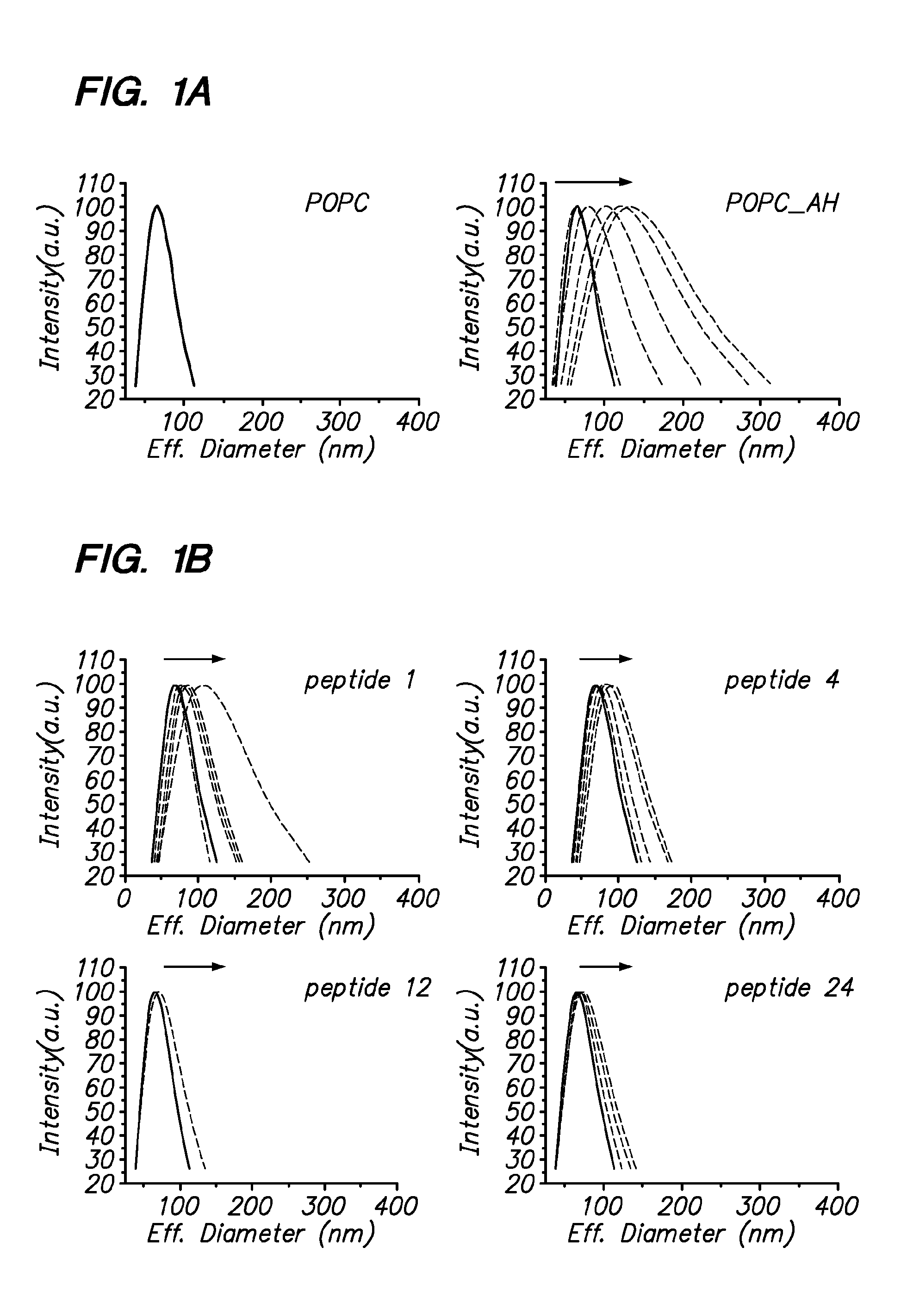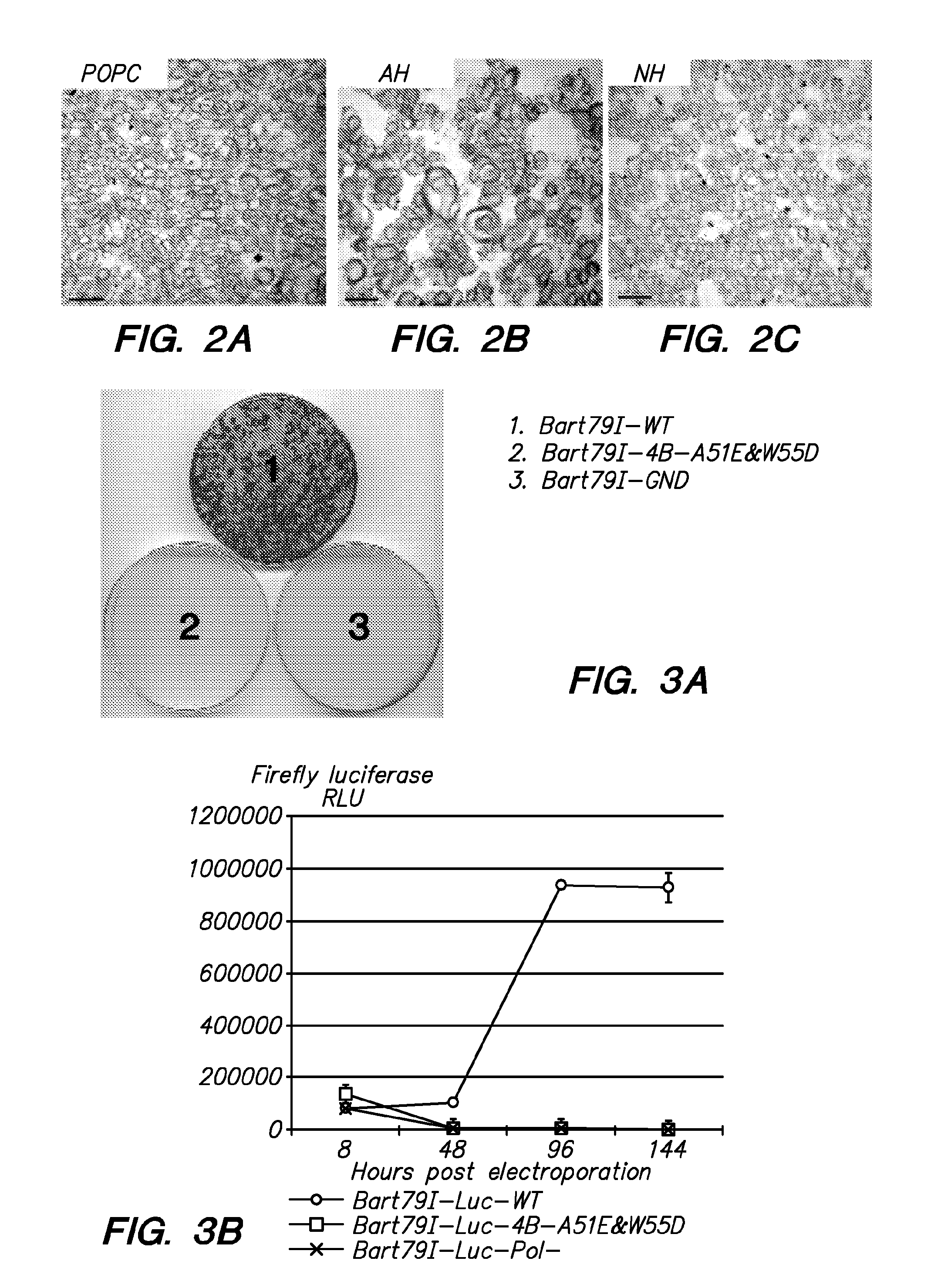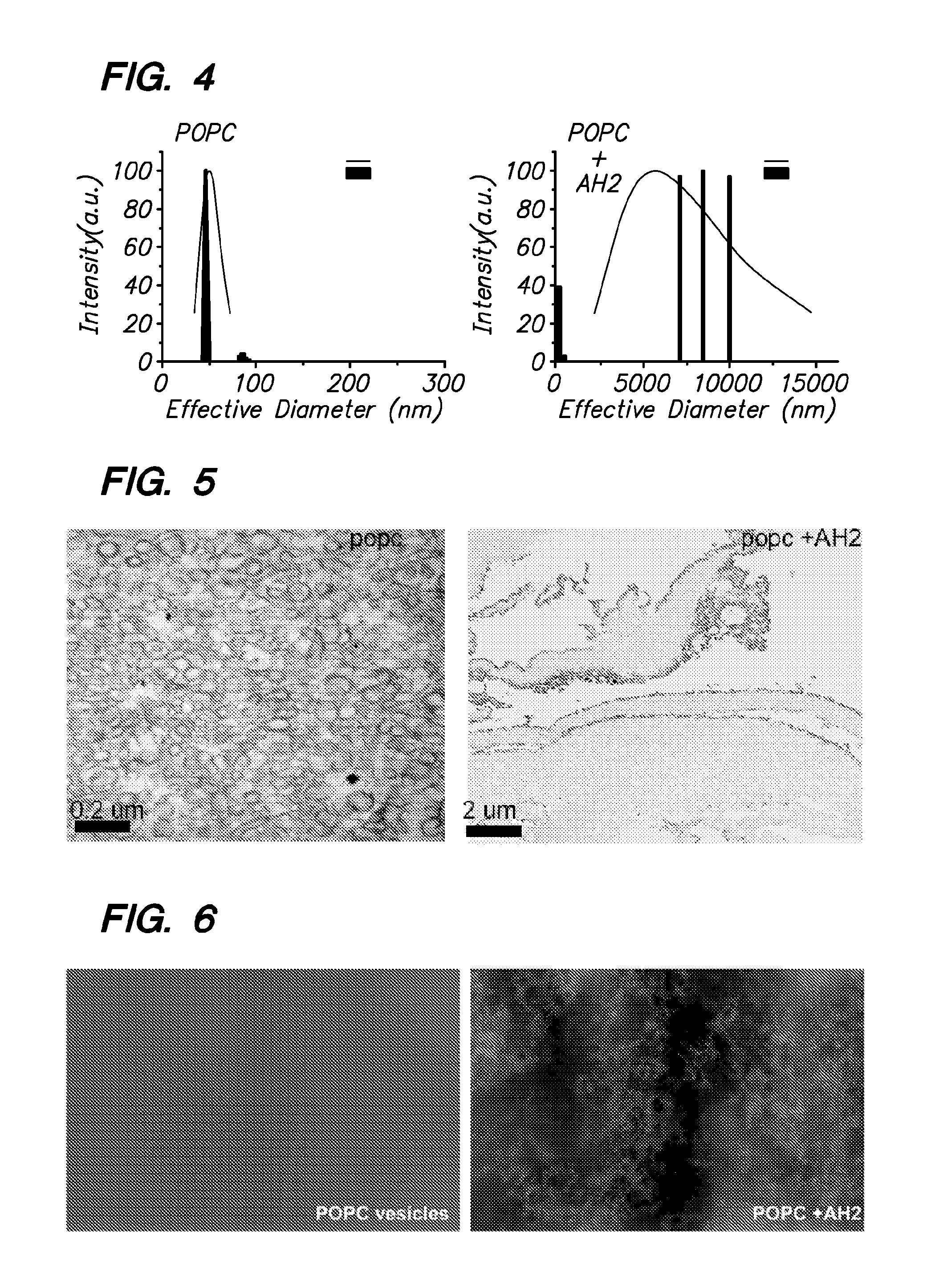Screening for Inhibitors of HCV Amphipathic Helix (AH) Function
a technology of amphipathic helix and inhibitor, which is applied in the field of screening for inhibitors of amphipathic helix (ah) function, can solve the problems of not being successful in many patients and without ribavirin
- Summary
- Abstract
- Description
- Claims
- Application Information
AI Technical Summary
Benefits of technology
Problems solved by technology
Method used
Image
Examples
example 1
Assays for Detecting Inhibitors of HCV AH Function
[0154]DLS-based screens for inhibitors of HCV amphipathic helix (AH) function. The N-terminal amphipathic helices (AHs) in NS4B and NS5A mediate membrane association and have been genetically validated as essential for HCV genome replication (Elazar et al. J. Virol. 2003, Elazar et al. J. Virol. 2004). We have discovered that these AHs not only mediate membrane association, but have functional biochemical activities. In particular they induce changes in the physical properties of lipid vesicles that result in an increase in the apparent average diameter of the vesicles, as measured by dynamic light scattering. This, in turn, enables novel screening assays based on this discovery that can identify pharmacologic inhibitors of HCV AH function that can be used to inhibit HCV replication.
[0155]The NS5A AH induces changes in the apparent size of lipid vesicles, as measured by DLS. Small unilamellar lipid vesicles of 1-palmitoyl-2-oleoyl-sn...
example 2
High-Throughput Screens for Inhibitors of HCV AH Function
[0161]Fluorescence based screen. Visualization of aggregation of lipid vesicles comprising fluorescent lipids was then adapted to a 384 well plate format, and used to screen a small molecule library for inhibitors of 4BAH2. Simple inspection for the presence of aggregates or their absence can identify positive and negative hits, respectively (see FIG. 7). In addition, the images can be digitized and quantitatively analyzed for the amount of fluorescence contained within a specified pattern. For example, a standard pattern recognition program can be used that sequentially detects edges and local intensity maxima in the received image; zooms in on the detected local intensity maxima; identifies intersection positions where the magnified local intensity maxima intersect with detected edges in the image; and zooms in on the identified intersection positions to define granule-like vesicle aggregation patterns induced by 4BAH2 pepti...
example 3
Inhibitors of HCV AH Function Exhibit Antiviral Activity
[0163]Effect of hits on HCV replication. Subsets of the above-identified hits are expected to be able to penetrate cells and similarly inhibit AH function within the context of the intact target protein in cells harboring replicating HCV genomes. An example of such a hit with antiviral activity against HCV is shown in FIG. 10. Compound C4 inhibits HCV replication in standard HCV replication assays: a genotype 1b luciferase reporter linked high efficiency subgenomic HCV replicon assay and Alamar blue assays for cell metabolism. Compound C4 increases the anti-HCV activity of NS3 protease inhibitor, SCH503034, “SCH”, that targets HCV (FIG. 11). Note that for the results shown in FIG. 11, a genotype 2a luciferase reporter-linked HCV replicons was used, indicating the broad spectrum potential of the C4 compound against multiple HCV genotypes.
Materials and Methods
[0164]Dynamic light scattering. Dynamic light scattering was performed ...
PUM
| Property | Measurement | Unit |
|---|---|---|
| Mass | aaaaa | aaaaa |
| Volume | aaaaa | aaaaa |
| Volume | aaaaa | aaaaa |
Abstract
Description
Claims
Application Information
 Login to View More
Login to View More - R&D
- Intellectual Property
- Life Sciences
- Materials
- Tech Scout
- Unparalleled Data Quality
- Higher Quality Content
- 60% Fewer Hallucinations
Browse by: Latest US Patents, China's latest patents, Technical Efficacy Thesaurus, Application Domain, Technology Topic, Popular Technical Reports.
© 2025 PatSnap. All rights reserved.Legal|Privacy policy|Modern Slavery Act Transparency Statement|Sitemap|About US| Contact US: help@patsnap.com



